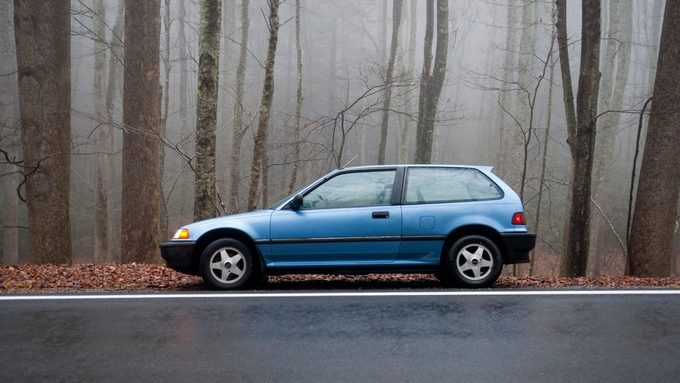What happens to abandoned vehicles depends, in part, on where you are

What Happens to Cars Abandoned on Highways?

If you’ve ever driven along a highway and looked over to see an abandoned car, you’ve probably wondered what’s going to happen to it. There are a variety of reasons a driver would leave a car behind on the side of the road, such as running out of gas and having to walk to the nearest gas station. Or following a car accident, when cars are typically moved to the side of the road, where they stay until they’re towed away. Abandoned cars can also appear in commercial parking lots and residential neighborhoods.
But whose job is it to remove an abandoned car, and how do they do it? Hopefully, you’ll never find yourself in this scary driving scenario, but if your curiosity has been piqued, read on to find out what happens to abandoned cars on highways.
Get Reader’s Digest’s Read Up newsletter for more travel, humor, cleaning, tech and fun facts all week long.
Abandoned vs. unclaimed vehicles: What’s the difference?
First, it’s good to figure out what kind of vehicle you’re dealing with. According to the New York State Department of Motor Vehicles, an abandoned vehicle is one that has been left unattended on another property without the owner’s permission for longer than 96 hours. An unclaimed vehicle, on the other hand, is a vehicle held by a business until the customer pays for it to be released. Think of having a car towed and needing to pick it up, or leaving a car that needs repair in the care of a mechanic. But each state has its own rules and regulations. For example, unlike New York, the Texas Department of Motor Vehicles considers a vehicle abandoned if it has remained on private property for more than 48 hours.
What’s the policy on removing vehicles?
There are no federal regulations regarding the removal of abandoned vehicles. Instead, it’s up to the states and municipalities to decide what to do with abandoned cars on highways and in neighborhoods. While it’s best to check with your state and municipality to see what the exact rules and regulations are regarding abandoned vehicles, the general process is that a citizen would notify the police department about the abandoned vehicle. Once the police are notified, the vehicle is identified and tagged. If the vehicle has not been moved by the owner within a certain time frame, the car is towed away and held until the owner comes to collect it. If the car hasn’t been claimed within a reasonable time period at an impound lot, then the car will either go up for auction at an inexpensive price to a willing buyer, or it will be destroyed.
Highways aren’t the only places where abandoned cars are removed. Many citizens take constructive action and report abandoned vehicles in their neighborhoods. Sometimes, you can tell a car has been abandoned by the parking tickets accumulating on the windshield. Like many states, in Vermont, private property owners are able to call towing companies to remove a car that has been abandoned on their property.
Abandoned cars on highways and in neighborhoods continue to be a big issue in metropolitan areas, like Oakland, which has about 17,000 abandoned vehicles on their streets a year, and Philadelphia, which has had more than 3o,000 abandoned vehicle complaints in recent years. Luckily more is being done in places like New York City, where a pilot police force unit is tasked with answering complaint calls about abandoned cars.
Why trust us
At Reader’s Digest, we’re committed to producing high-quality content by writers with expertise and experience in their field in consultation with relevant, qualified experts. We rely on reputable primary sources, including government and professional organizations and academic institutions as well as our writers’ personal experiences where appropriate. We verify all facts and data, back them with credible sourcing and revisit them over time to ensure they remain accurate and up to date. Read more about our team, our contributors and our editorial policies.
Sources:
- New York State Department of Motor Vehicles: “Abandoned and Unclaimed Vehicles”
- Texas Department of Motor Vehicles: “Abandoned Vehicles”
- Vermont Department of Motor Vehicles: “Abandoned Vehicles”
- Poynter: “The connection between abandoned cars and crime”
- Philadelphia Inquirer: “Philly has a backlog of 34,000 abandoned car complaints—and the city has no solution”
- NY Post: “NYPD’s new ‘Q-Team’ tackles NYC’s quality of life gripes – The Post rode along as officers responded to abandoned cars and excessive noise”























